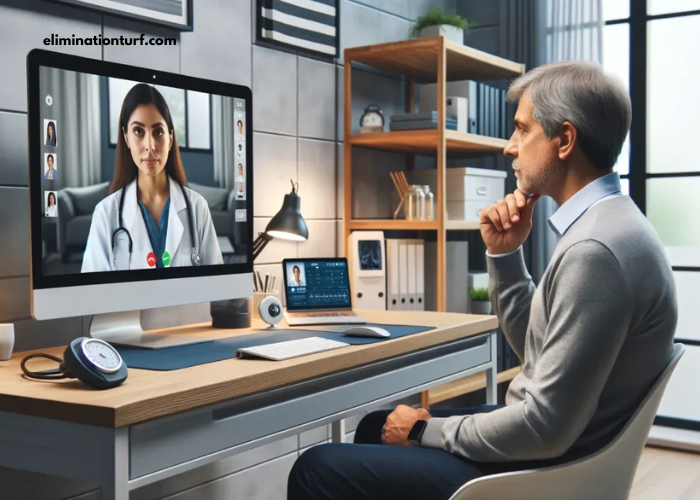The healthcare industry is undergoing a digital revolution, with telemedicine and digital health solutions emerging as key drivers of change. These advancements are transforming the way patients receive medical care, making healthcare more accessible, efficient, and cost-effective. With the integration of artificial intelligence (AI), the Internet of Things (IoT), and other cutting-edge technologies, telemedicine is set to redefine the global healthcare landscape.
The Evolution of Telemedicine
Early Beginnings
Telemedicine is not a new concept; its origins date back to the 1950s when healthcare professionals used telecommunications to provide medical advice to remote locations. However, the rapid advancement of technology, particularly with the advent of the internet, has significantly expanded its capabilities.
Technological Advancements
Recent innovations have accelerated the growth of telemedicine, enabling real-time consultations, remote monitoring, and enhanced patient engagement. With high-speed internet, cloud computing, and mobile applications, telemedicine has become more efficient and widely accessible.
Key Components of Digital Health Solutions
Teleconsultation
Teleconsultation allows patients to connect with healthcare providers remotely via video conferencing or phone calls. This eliminates the need for physical visits, reducing waiting times and improving access to medical care, especially in underserved regions.
Remote Patient Monitoring (RPM)
RPM uses wearable devices and sensors to track patients’ vital signs in real time. This technology enables doctors to monitor chronic conditions such as diabetes, hypertension, and cardiovascular diseases, allowing for early intervention and personalized treatment plans.
Artificial Intelligence in Healthcare
AI-driven telemedicine platforms can analyze vast amounts of patient data to provide diagnostic support, predict disease outbreaks, and recommend treatment options. AI-powered chatbots and virtual assistants are also helping patients with routine queries, improving efficiency in healthcare delivery.
Electronic Health Records (EHRs)
EHRs have streamlined patient data management, allowing healthcare providers to access and update medical records digitally. This has enhanced communication between different healthcare professionals, reducing errors and improving overall patient care.
Mobile Health (mHealth) Apps
Mobile applications are playing a crucial role in digital health by enabling patients to schedule appointments, receive medication reminders, and access virtual fitness programs. These apps empower individuals to take control of their health and wellness.
The Benefits of Telemedicine and Digital Health
Improved Access to Healthcare
One of the most significant advantages of telemedicine is its ability to bridge the gap between patients and healthcare providers, particularly in rural and remote areas where medical facilities are scarce.
Cost-Effectiveness
Telemedicine reduces healthcare costs by minimizing hospital admissions, travel expenses, and in-person consultations. Patients can receive timely care without the financial burden associated with traditional healthcare models.
Enhanced Patient Engagement
With digital health solutions, patients can actively participate in their healthcare journey. Online portals, wearable devices, and mobile apps provide real-time insights, allowing individuals to make informed decisions about their health.
Reduced Hospital Readmissions
Remote monitoring and virtual consultations help detect potential health issues early, reducing the likelihood of hospital readmissions. This is particularly beneficial for chronic disease management.
Challenges Facing Telemedicine
Regulatory and Legal Barriers
Different countries have varying regulations regarding telemedicine, creating challenges for global implementation. Privacy concerns, licensing issues, and reimbursement policies need to be addressed for seamless integration.
Digital Divide
While telemedicine is advancing rapidly, not everyone has equal access to digital technologies. Limited internet connectivity, lack of digital literacy, and affordability issues remain significant barriers.
Data Security and Privacy
With the increasing use of digital health platforms, protecting patient data from cyber threats is a top priority. Strong encryption methods, strict compliance with data protection laws, and continuous cybersecurity improvements are essential.
Future Trends in Telemedicine and Digital Health
Expansion of AI and Machine Learning
AI will continue to play a vital role in telemedicine, enhancing diagnostics, automating administrative tasks, and personalizing treatment plans. AI-powered analytics will help predict diseases and improve patient outcomes.
Integration of 5G Technology
5G networks will enable faster and more reliable telemedicine services, ensuring seamless video consultations and real-time data transmission. This will significantly enhance remote healthcare delivery.
Blockchain for Secure Health Data Management
Blockchain technology will improve data security and interoperability among healthcare providers. By creating decentralized and tamper-proof records, blockchain can enhance patient data protection and streamline information sharing.
Virtual Reality (VR) and Augmented Reality (AR) in Telemedicine
VR and AR technologies will revolutionize medical training, remote surgeries, and rehabilitation therapies. These immersive technologies can simulate real-life scenarios, improving both patient care and medical education.
Internet of Medical Things (IoMT)
IoMT encompasses a network of connected medical devices that transmit real-time health data. Smart wearable devices, remote monitoring tools, and AI-driven analytics will enable more proactive healthcare management.
Conclusion
The future of telemedicine and digital health solutions is bright, with continued technological advancements paving the way for more efficient, accessible, and patient-centric healthcare. As the industry addresses regulatory, security, and accessibility challenges, telemedicine will become an integral part of modern healthcare systems worldwide. Embracing these innovations will not only improve patient outcomes but also create a more sustainable and cost-effective healthcare ecosystem.
